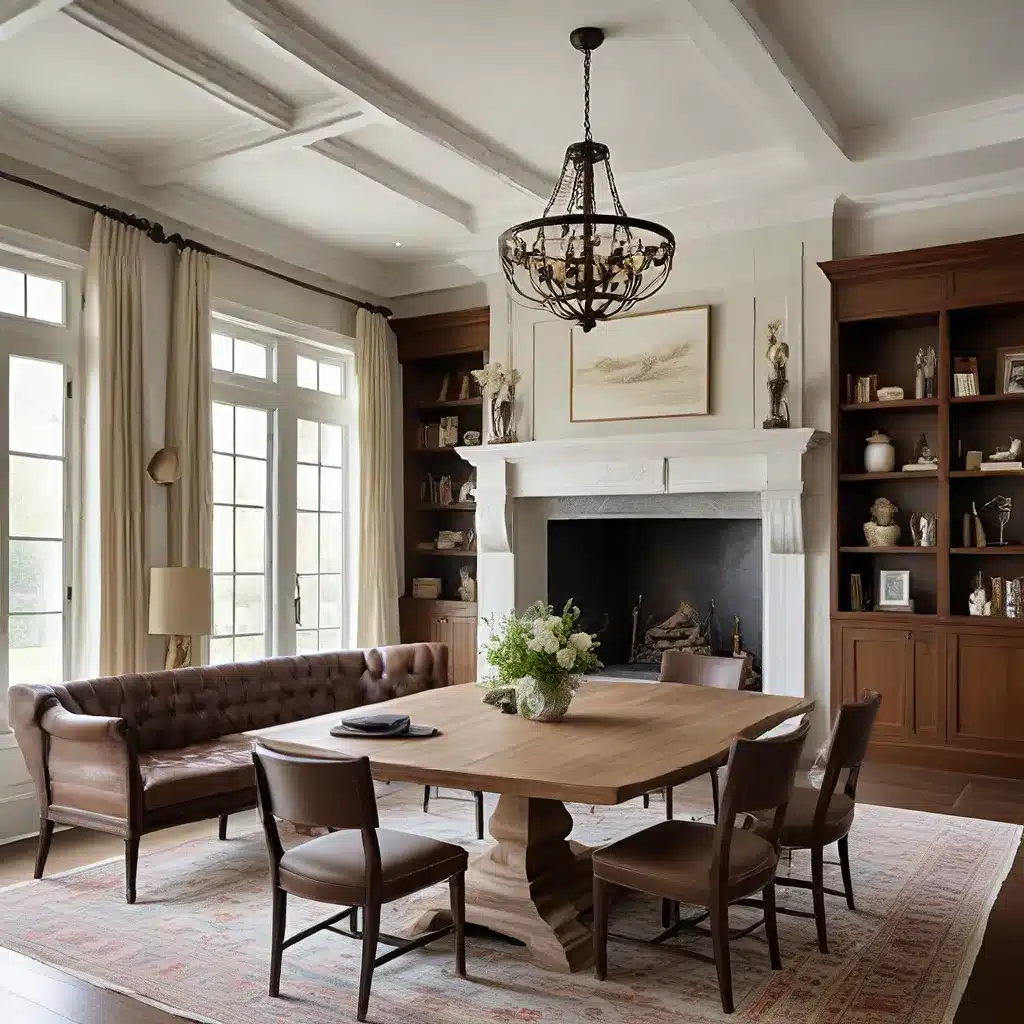
In a world that often prioritizes the latest trends and sleek, minimalist aesthetics, there is a growing appreciation for the enduring charm and character of heritage-style interiors. These spaces, which seamlessly blend the old and the new, offer a warm, inviting, and deeply personal living experience that resonates with design enthusiasts and homeowners alike.
Embracing the Past, Elevating the Present
At the heart of the heritage-style movement lies a desire to honor the rich history and cultural traditions that have shaped our architectural landscapes. By thoughtfully incorporating elements from the past, designers and homeowners can create interiors that feel both timeless and tailored to their unique preferences.
One of the key aspects of this design approach is the careful selection of materials and finishes. From the revival of traditional paint colors and the use of reclaimed wood to the incorporation of handcrafted textiles and antique furnishings, each element tells a story and contributes to the overall sense of authenticity.
Mastering the Art of Mixing Old and New
Achieving the perfect balance between old and new can be a delicate dance, but when executed with skill, the results can be truly captivating. The secret lies in the ability to juxtapose vintage and modern pieces in a way that enhances the strengths of both, creating a harmonious and visually striking space.
One effective strategy is to ground the room with classic architectural features, such as ornate moldings, intricate ceiling details, or beautifully preserved hardwood floors. These timeless elements serve as a foundation upon which designers can layer contemporary furnishings, artwork, and accessories, seamlessly blending the past and present.
Honoring Heritage Through Color and Texture
Color and texture play a crucial role in shaping the character of a heritage-style interior. Earthy, muted hues inspired by nature and bygone eras, such as rich ochres, deep greens, and weathered blues, provide a warm and inviting backdrop. Textural elements, like woven rugs, linen upholstery, and aged wood, add depth and visual interest, creating a sense of depth and authenticity.
Incorporating patterns that draw inspiration from traditional textiles and architectural details can also be a powerful way to infuse a space with heritage-inspired charm. Delicate florals, bold stripes, and intricate geometric designs can be mixed and matched to create a visually captivating and distinctly personal aesthetic.
Curating a Collected, Lived-In Look
One of the hallmarks of a successful heritage-style interior is the curated, lived-in feel that it exudes. This is achieved through the careful selection and arrangement of furnishings, art, and accessories that convey a sense of history and personality.
Urban Grace Interiors, a renowned design firm, emphasizes the importance of this approach, noting that “a heritage-style home should feel like it has evolved over time, with each piece carefully chosen to contribute to the overall narrative.”
By mixing and matching vintage and modern elements, homeowners can create a space that feels both timeless and tailored to their unique sensibilities. Unexpected pairings, such as a Victorian-era armchair paired with a sleek, contemporary side table, can inject a delightful element of surprise and individuality.
Embracing the Imperfect and the Unexpected
In the world of heritage-style interiors, there is a certain beauty in the imperfect and the unexpected. Embracing the natural patina of antique furnishings, the uneven textures of handcrafted tiles, and the slightly worn edges of vintage accessories can imbue a space with a sense of character and authenticity that mass-produced, flawless pieces simply cannot replicate.
This appreciation for the imperfect also extends to the layout and arrangement of the room. Rather than striving for rigid symmetry, heritage-style design often celebrates the organic and the asymmetrical, with furnishings and decor items arranged in a way that feels natural and lived-in.
Sustainability and Longevity: The Benefits of Heritage-Style Design
In addition to the aesthetic appeal of heritage-style interiors, there are also practical and environmental benefits to this design approach. By repurposing and incorporating vintage and antique elements, homeowners can reduce waste and lower their carbon footprint, contributing to a more sustainable future.
Furthermore, the longevity and durability of many heritage-style materials and furnishings mean that these pieces can be enjoyed for generations, passing down a sense of history and tradition to future homeowners. This focus on timeless design and quality craftsmanship aligns with the growing consumer demand for products and services that prioritize sustainability and long-term value.
Cultivating a Personalized Heritage-Style Haven
Ultimately, the beauty of heritage-style interiors lies in their ability to reflect the unique stories and experiences of the homeowners who inhabit them. By blending cherished heirlooms, locally sourced artisanal items, and carefully curated contemporary pieces, these spaces become a true reflection of their owners’ passions, interests, and cultural heritage.
Whether you’re drawn to the rustic charm of a farmhouse-inspired aesthetic or the refined elegance of a traditional European manor, the key is to embrace the heritage-style approach and infuse your home with a sense of timeless beauty and personal significance.
By honoring the past while thoughtfully incorporating modern elements, you can create an interior that is both visually stunning and deeply meaningful, a sanctuary that celebrates the enduring power of tradition and craftsmanship in the ever-evolving world of design.

